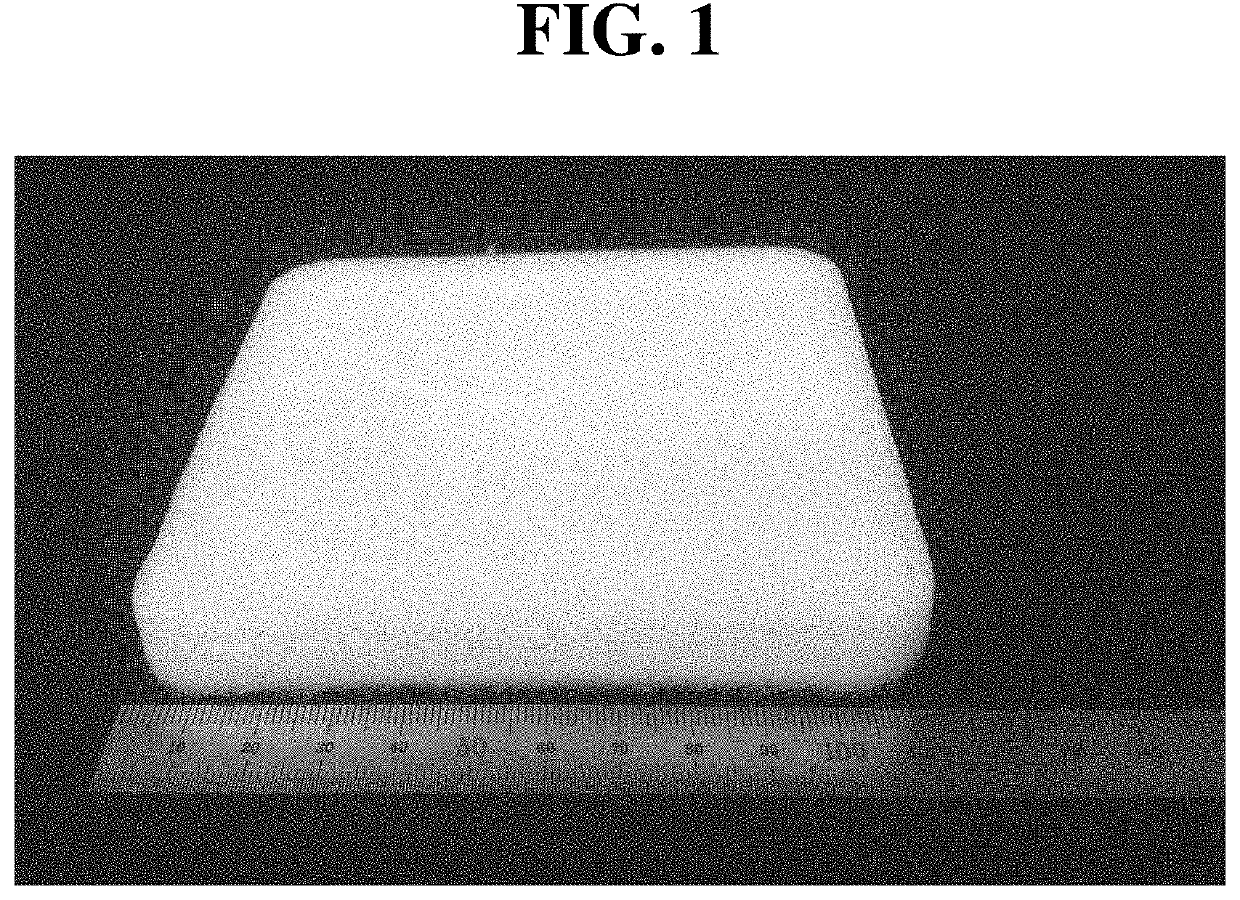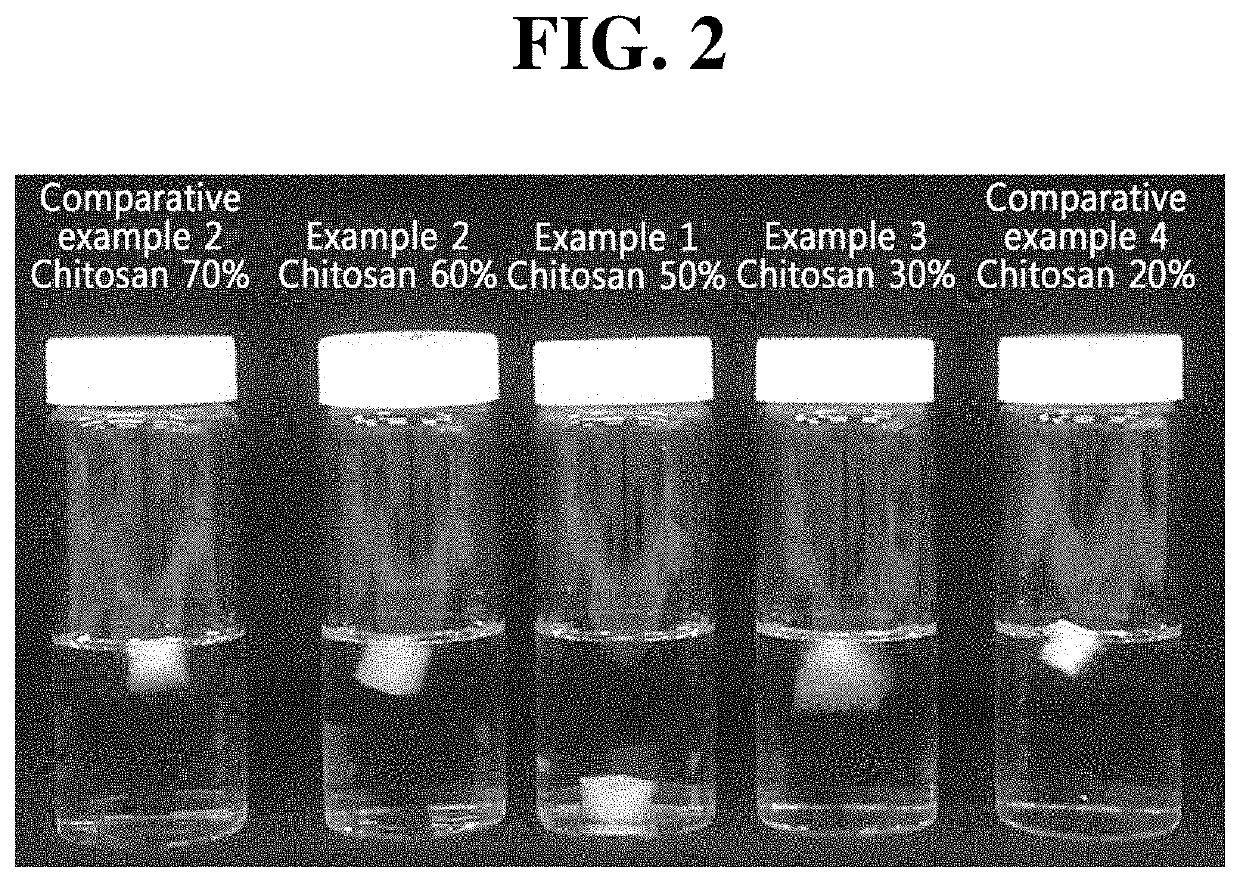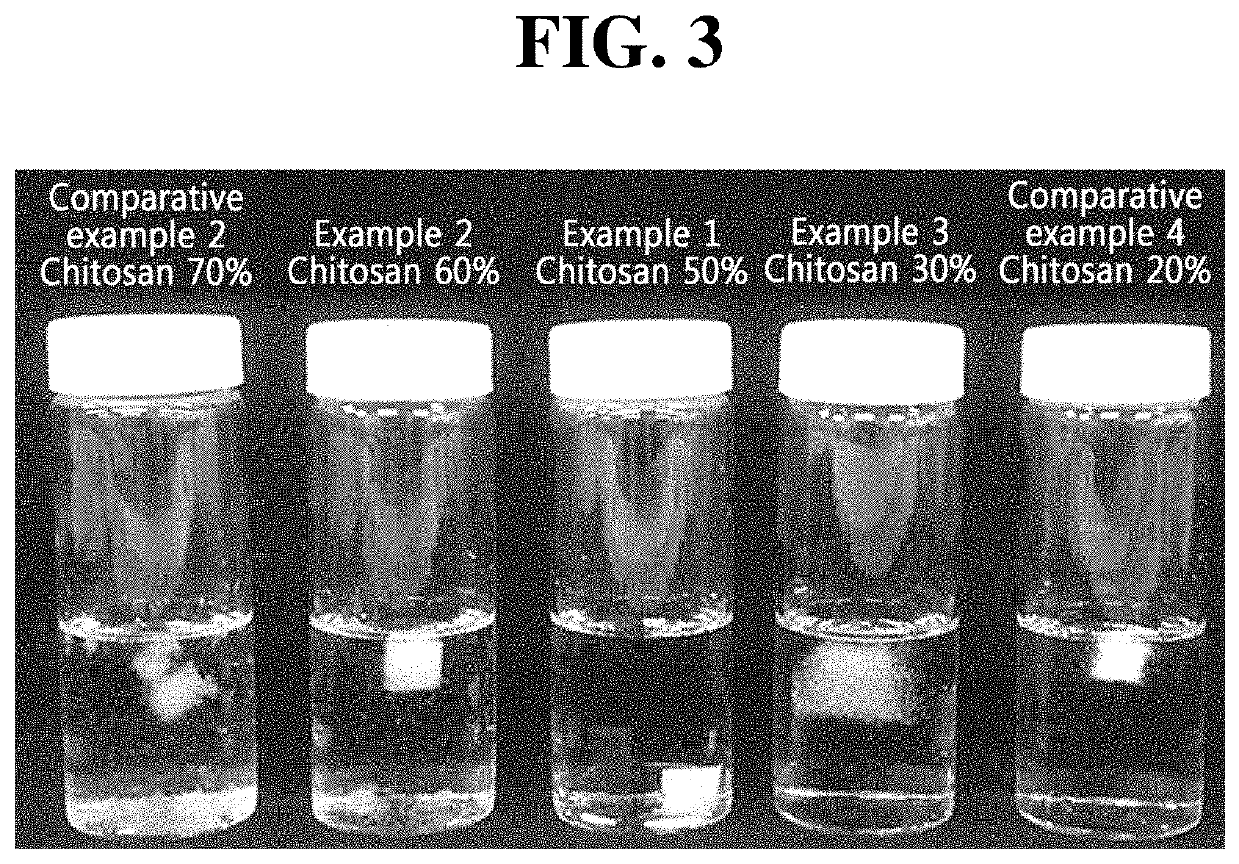Porous structure and method for manufacturing same
a porous structure and manufacturing method technology, applied in the field of porous structure and a process for preparing the same, can solve the problems of affecting the healing effect of animals including humans, affecting the healing effect of patients, and accompanies bleeding, so as to achieve superior hemostatic function, thickening effect, and high shape stability.
- Summary
- Abstract
- Description
- Claims
- Application Information
AI Technical Summary
Benefits of technology
Problems solved by technology
Method used
Image
Examples
example 1
[0097]Sodium Carboxymethyl Cellulose (CMC, Degree of substitution 0.9) was dissolved in distilled water to prepare 2%(w / v) aqueous solution. 200 mL of 2%(w / v) CMC solution was put in a blend mixer, 200 mL of water was added and mixed therewith, and 4 g of water-soluble chitosan (Degree of deacetylation: 87%, Weight average molecular weight 350,000 mol / g) powder was added and strongly shaked. In 2-3 minutes after the addition of water-soluble chitosan, the blend-mixer was strongly shaked again to prepare 2%(w / v) composition in opaque white slurry phase including 50 parts by weight of water-soluble chitosan and 50 parts by weight of sodium carboxymethyl cellulose.
[0098]The prepared solution was poured into a polystyrene square petri dish of 125 mm×125 mm×20 mm, frozen at 0° C. for 4 hours and at −15° C. for 24 hours, and vacuum-dried at 60° C. to prepare a foam-type porous structure. The prepared porous structure is shown in FIG. 1. The apparent density of the prepared porous structur...
example 2
[0099]Sodium Carboxymethyl Cellulose (CMC, Degree of substitution 0.9) was dissolved in distilled water to prepare 2%(w / v) aqueous solution. 160 mL of 2%(w / v) CMC solution was put in a blend mixer, 240 mL of water was added and mixed therewith, and 4.8 g of water-soluble chitosan (Degree of deacetylation: 87%, Weight average molecular weight 350,000 mol / g) powder was added and strongly shaked. In 2-3 minutes after the addition of water-soluble chitosan, the blend mixer was strongly shaked again to prepare 2%(w / v) composition in opaque white slurry phase including 60 parts by weight of water-soluble chitosan and 40 parts by weight of sodium carboxymethyl cellulose.
[0100]The prepared solution was poured into a polystyrene square petri dish of 125 mm×125 mm×20 mm, frozen at 0° C. for 4 hours and at −15° C. for 24 hours, and vacuum-dried at 60° C. to prepare a foam-type porous structure. The apparent density of the prepared porous structure was 0.0234 g / cm3.
example 3
[0101]Sodium Carboxymethyl Cellulose (CMC, Degree of substitution 0.9) was dissolved in distilled water to prepare 2%(w / v) aqueous solution. 280 mL of 2%(w / v) CMC solution was put in a blend mixer, 120 mL of water was added and mixed therewith, and 2.4 g of water-soluble chitosan (Degree of deacetylation: 87%, Weight average molecular weight 350,000 mol / g) powder was added and strongly shaked. In 2-3 minutes after the addition of water-soluble chitosan, the blend mixer was strongly shaked again to prepare 2%(w / v) composition in opaque white slurry phase including 30 parts by weight of water-soluble chitosan and 70 parts by weight of sodium carboxymethyl cellulose.
[0102]The prepared solution was poured into a polystyrene square petri dish of 125 mm×125 mm×20 mm, frozen at 0° C. for 4 hours and at −15° C. for 24 hours, and vacuum-dried at 60° C. to prepare a foam-type porous structure. The apparent density of the prepared porous structure was 0.0230 g / cm3.
PUM
| Property | Measurement | Unit |
|---|---|---|
| density | aaaaa | aaaaa |
| width×length×height | aaaaa | aaaaa |
| apparent density | aaaaa | aaaaa |
Abstract
Description
Claims
Application Information
 Login to View More
Login to View More - R&D
- Intellectual Property
- Life Sciences
- Materials
- Tech Scout
- Unparalleled Data Quality
- Higher Quality Content
- 60% Fewer Hallucinations
Browse by: Latest US Patents, China's latest patents, Technical Efficacy Thesaurus, Application Domain, Technology Topic, Popular Technical Reports.
© 2025 PatSnap. All rights reserved.Legal|Privacy policy|Modern Slavery Act Transparency Statement|Sitemap|About US| Contact US: help@patsnap.com



